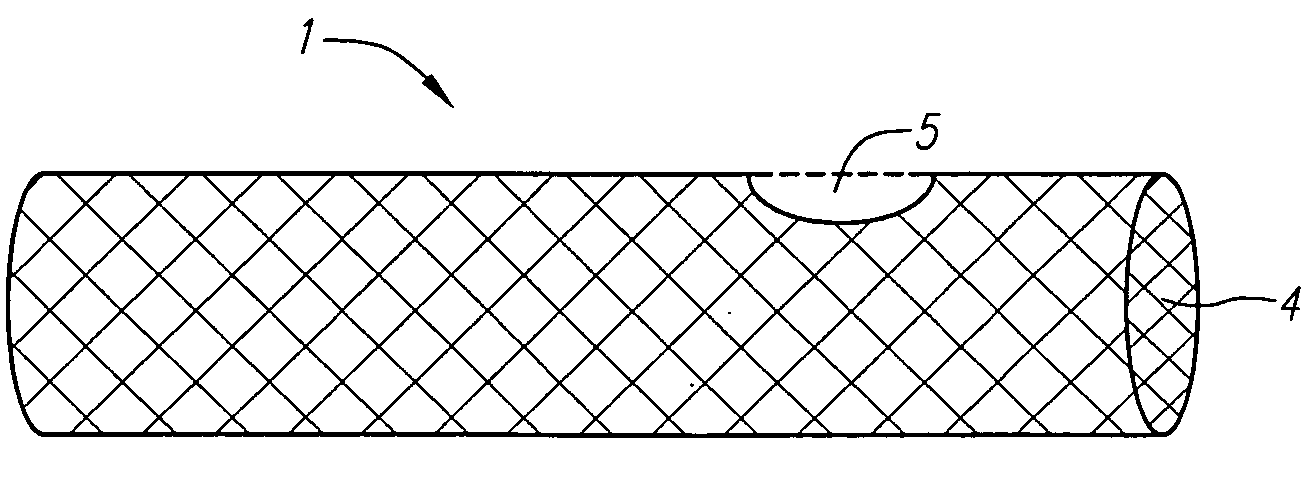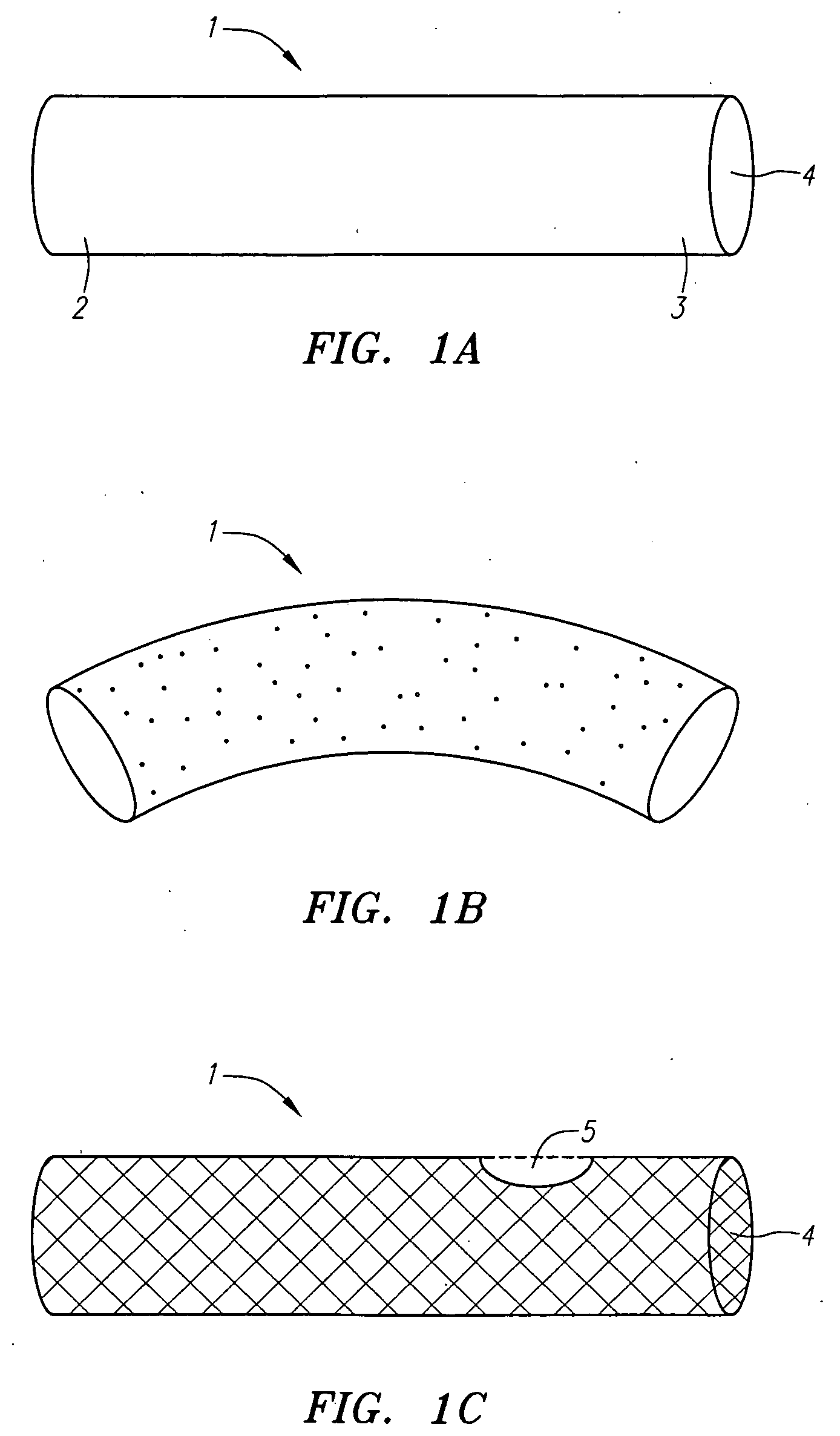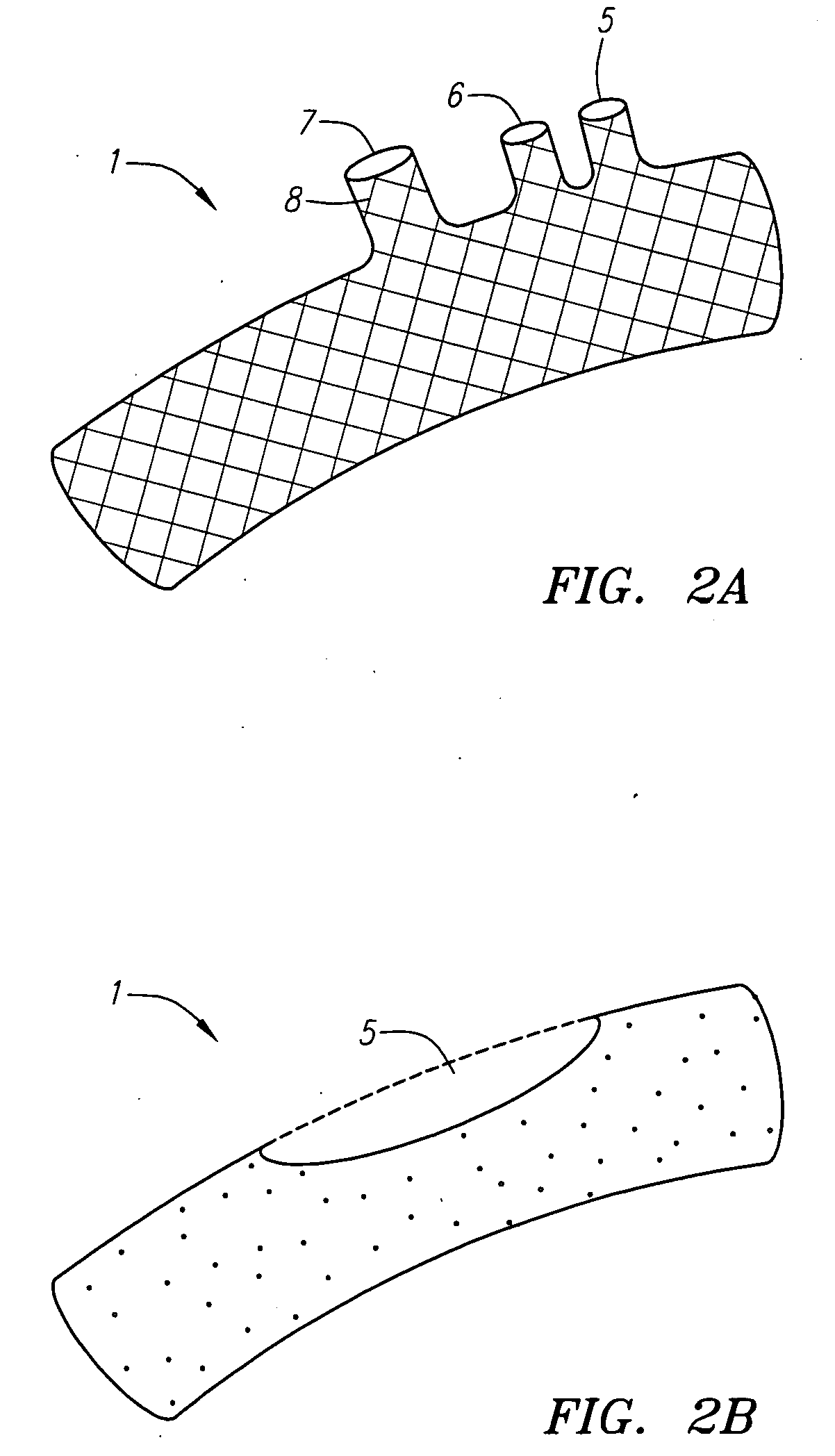Methods and devices for treating aortic atheroma
a mobile aortic atheroma and aortic atheroma technology, applied in the field of mobile aortic atheroma devices and methods, can solve the problems of increased embolization risk, no good method for removing mobile plaque in the aorta, and the highest risk of embolism for plaques with mobile components. achieve good positioning
- Summary
- Abstract
- Description
- Claims
- Application Information
AI Technical Summary
Benefits of technology
Problems solved by technology
Method used
Image
Examples
first embodiment
[0044] an aortic stent for trapping plaque is shown in FIG. 1A. Stent 1 comprises an elongated cylindrical member having a first end 2, a second end 3, and a lumen 4 therebetween. The stent can be made of nitinol or stainless steel, or any other suitable material known in the art. The stent is expandable between a compressed state that allows the stent to be advanced through narrow vessels and through the aorta and an enlarged state. The stent can be generally straight as depicted in FIG. 1A or curved as depicted in FIG. 1B. The stent may have one or more side openings 5 as depicted in FIG. 1C to allow blood to flow into branching arteries. The stent can have small pores (FIG. 1B), no pores (FIG. 1A), or a mesh with large pores (FIG. 1C).
[0045] In another embodiment, the stent will include one, two, or three side openings as depicted in FIG. 2A. The one or more side openings may, in certain cases, be equipped with sleeves 8 that ensure proper alignment with vessels that branch from ...
PUM
 Login to View More
Login to View More Abstract
Description
Claims
Application Information
 Login to View More
Login to View More - R&D
- Intellectual Property
- Life Sciences
- Materials
- Tech Scout
- Unparalleled Data Quality
- Higher Quality Content
- 60% Fewer Hallucinations
Browse by: Latest US Patents, China's latest patents, Technical Efficacy Thesaurus, Application Domain, Technology Topic, Popular Technical Reports.
© 2025 PatSnap. All rights reserved.Legal|Privacy policy|Modern Slavery Act Transparency Statement|Sitemap|About US| Contact US: help@patsnap.com



